How a Year of Living Off the Grid With Kids Helped Prepare Me for the Global Pandemic
One morning last winter, I woke with four small feet wedged against my thighs. My blankets were damp with sweat; a lumpy duffel bag full of clothes and backpacking equipment doubled as my pillow. We were camped in our van next to a glacial-fed river on New Zealand’s mountainous south island. My two-year-old son was asleep next to me, his arms spread wide, while my four-year-old son lay on his belly dreaming of something that prompted occasional kicks in my direction. Against the opposite wall, my husband was curled on his side, taking up as little space as possible for a grown man. We were a grittier version of #VanLife and the tiny-house movement, compressed.
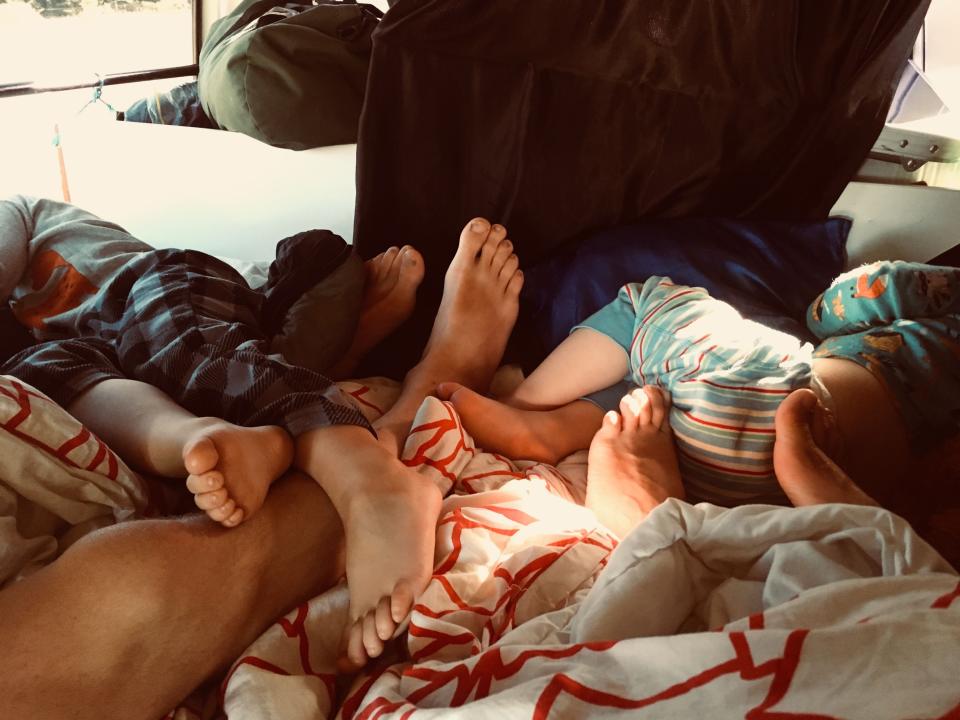
For the past six weeks, we’d been co-sleeping on a queen-size mattress crammed inside a 1998 Nissan Caravan. As part of our self-made family sabbatical—a year of travel before our older child started kindergarten—we’d flown to Auckland on discounted tickets. Despite the spectacular setting, traveling through New Zealand by camper van had proven to be slightly less glamorous than we’d imagined. Instead of a house on wheels, we were living in a vehicle with no amenities other than a hand-pumped sink that drained into a five-gallon bucket and a self-contained chemical toilet that the previous owners had told us wasn’t really intended for use.
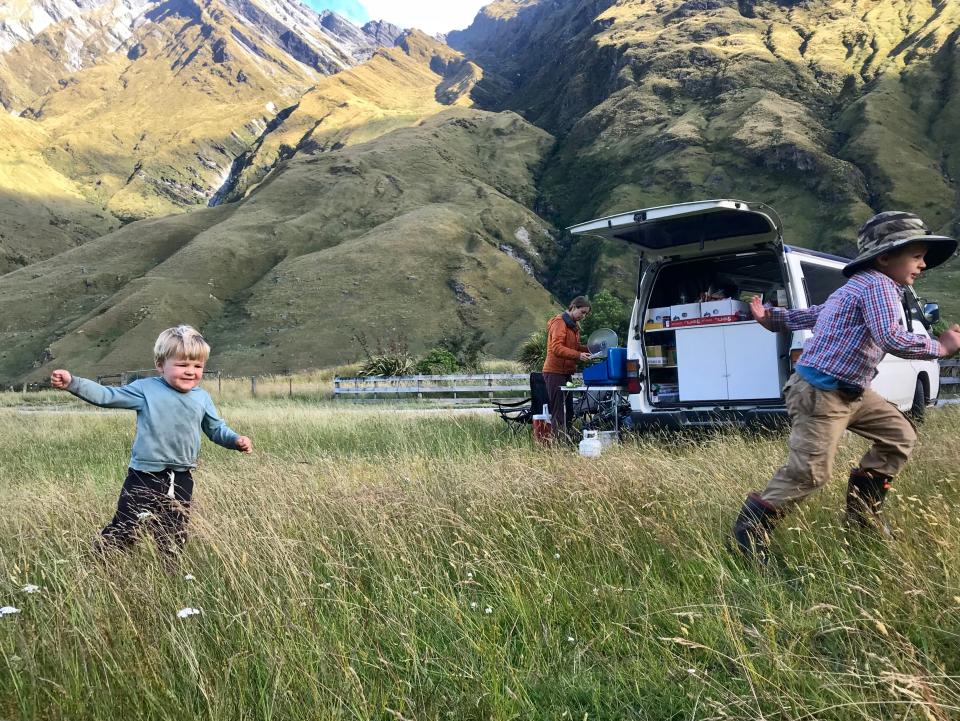
Before leaving, we’d rented out our house in Anchorage, Alaska, and set off with only what we could fit into half a dozen duffel bags. I’d temporarily swapped my job as a research biologist for a remote position; my husband had suspended the residential design-and-build company he owned. This wasn’t the first time we had chosen an unconventional path—as a couple, we’d spent many months living out of a tent or in a remote log cabin we built by hand. But this year marked a radical transition from our “normal” life, which included full-time jobs, childcare, and a cozy house in the center of Alaska’s largest city.
When we planned our travels, we hadn’t factored square footage into the equation. But we spent, in the end, eight weeks in a van, four weeks in a tent, two weeks in backcountry huts, 16 weeks on a sailboat, and most of the remainder of the year in a remote, off-the-grid cabin. Average living space came in somewhere around 250 square feet, with the 650-square-foot cabin skewing our numbers considerably. Add two young children and the gear needed to feed, clothe, diaper, and entertain them, and the already undersized accommodations shrunk exponentially. I never could have guessed that training ourselves to coexist in small spaces would have such practical applications.
We missed the comforts of our ordinary routine, and then forgot about them.
On that quiet January morning, just before 5 a.m., the southern hemisphere sun had already begun to color the sky pink. I crawled, as stealthily as possible, into the front seat, where I had strategically placed my pants and laptop. A pile of beach toys had somehow landed on my computer, and my pants were now buried beneath diapers and clothes. I carefully removed shovels and plastic buckets but decided that it wasn’t worth risking waking the kids by getting dressed, so I grabbed a towel to wrap around my legs. The river we’d camped next to offered just enough background noise to mask the creaking door as it swung open.
I settled with my laptop on the grass against a tree, and as I started up my computer, a New Zealand robin sang nearby. A green and purple kingfisher with its unmusical kek-kek-kek flew across the river. A tomtit foraged in the downed leaves nearby. I celebrated the fact that so far, no one had followed me outside.
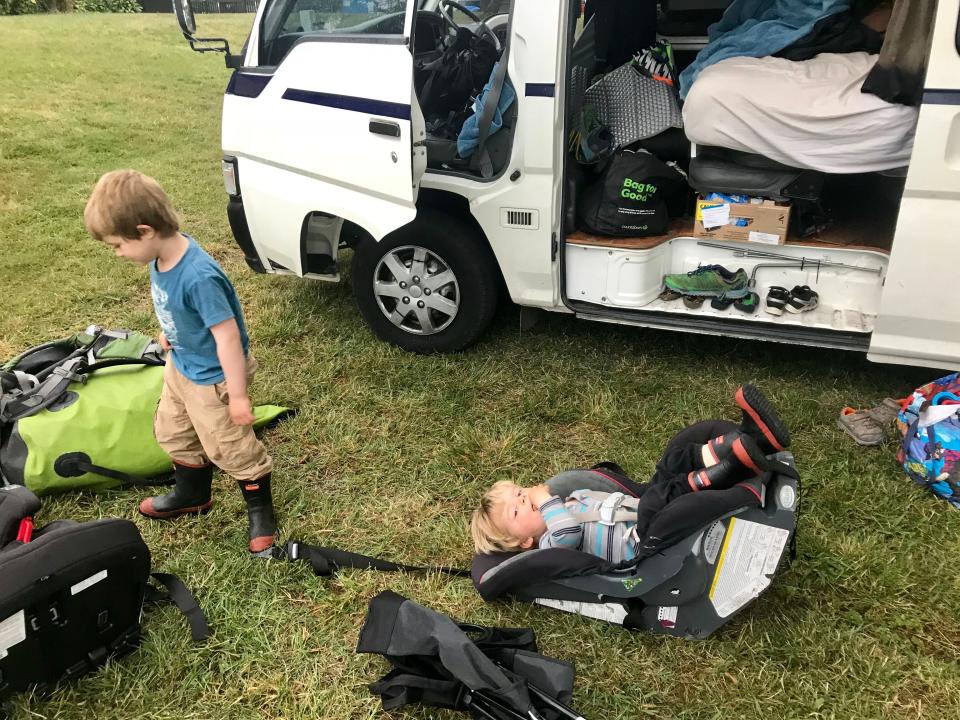
Two hours later, the van door opened again, spilling wet diapers, sand toys, and sleeping bags. Barefoot and pajama-clad, the boys ran to join me on the grass. My husband, who had lain awake quietly for half an hour, waiting for the boys to stir, began work on the tedious task of folding our mattress back into a bench seat. The boys began the day, as they always did, with their litany of demands.
“I’m hungry.”
“I can’t find my trucks.”
“I need my shoes.”
“Where are we going today?”
“What bird is that?”
Out came the folding chairs and rickety plastic table, the stove and pots, the oatmeal, the coffee. Before breakfast was served, something would be spilled, something else would be broken, and someone would be in tears. Between packing up our tiny home, our muddy hiking gear, and our breakfast dishes, we would likely forget some essential item. And so each day would go by—rarely in line with my expectations.
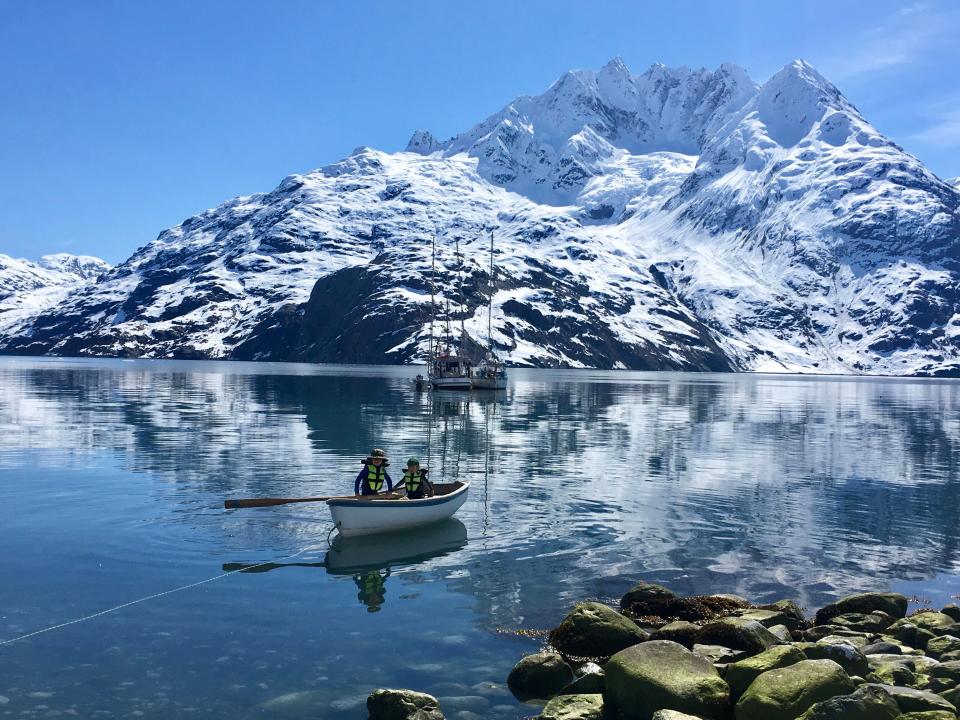
Today, 16 months later, on the other side of the globe, I snuck out of my bedroom in Anchorage, Alaska, with the same desperate wish—to have a few moments to myself. In many ways, the context couldn’t be more different. We’ve since returned to our home, where the global pandemic and the lockdown it has imposed makes a lengthy outing in a cramped van seem downright appealing. We are living much larger than we did then, with the luxuries of indoor plumbing, a dishwasher, and separate bedrooms; still, certain elements of our collective confinement feel strangely familiar.
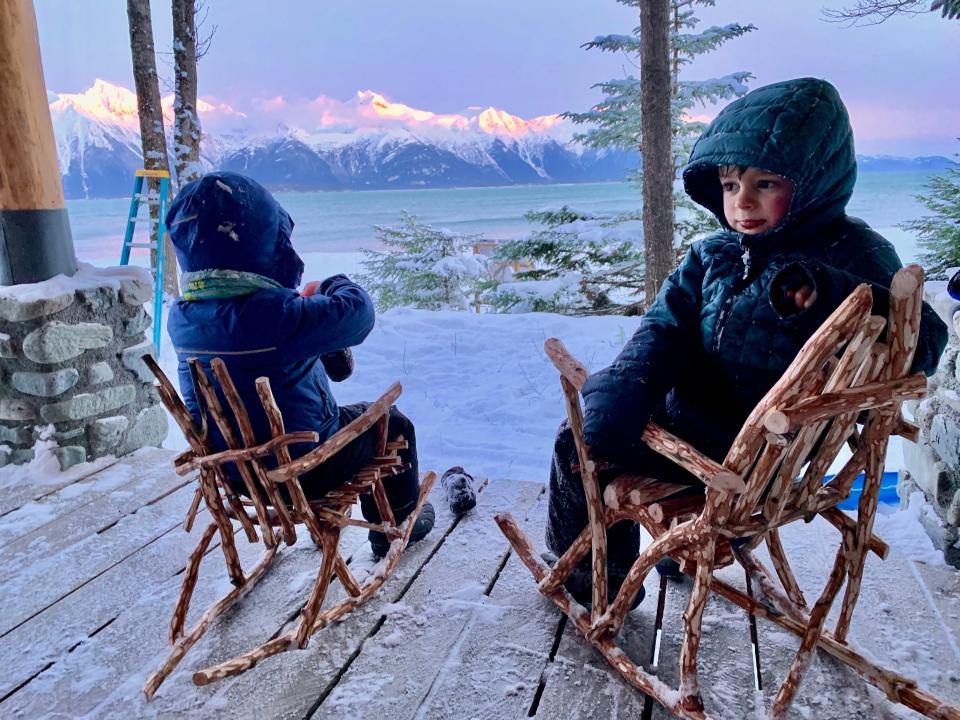
Like so many families around the world, we have settled into begrudging acceptance of our current reality. Shared spaces and lack of childcare necessitate odd work hours; we find ourselves choosing between sleep and a paycheck. I write research papers at midnight, answer emails at dawn, and stay up until sunrise making edits. We juggle virtual meetings, often battling technology more than embracing it. There are clothes to wash, dinners to cook, teeth to brush, and sibling fights to mediate. No matter how hard I try, I can’t seem to reign in the messes. Of course none of us would choose a pandemic as a means of family bonding. But for many of us, here we are: navigating spaces that feel too cramped with voices that know only a single volume—loud.
When I find my patience wearing thin, I think back to the most trying moments of our family’s travels. What I remember most was my gradual acceptance of chaos. From the back of a cluttered van or the inside of a pee-soaked tent, there was no ignoring the fact that entropy ruled. At first, I hated that tidiness eluded me. But eventually I stopped looking for matching socks. I made do with broken sleep and outdoor toilets. As a family, we learned to live with fewer possessions. The same three outfits sufficed, so long as they layered on top of each other. We adopted a sliding scale of cleanliness. A dip in the ocean and a baby wipe could substitute for a shower. We missed the comforts of our ordinary routine, and then forgot about them.
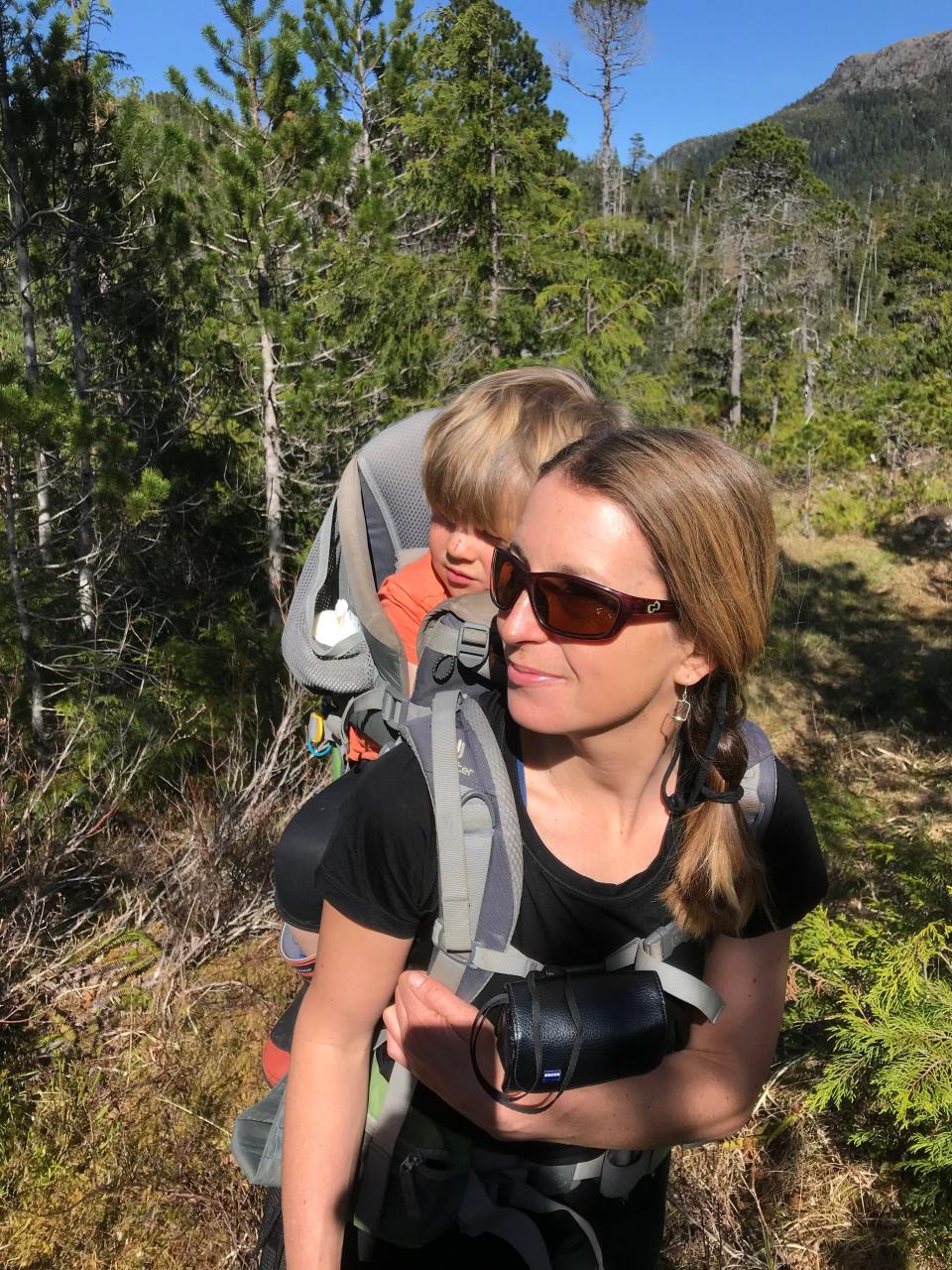
Somewhere along the way, as much a product of defeat as enlightenment, I stopped insisting on the sanctity of order. And soon, I began to notice things I hadn’t before. The funny way my son skipped over roots on the trail when he was excited. The wave-worn pattern in the rocks reminiscent of contour lines on a map. The shiny-backed beetles crawling beneath the duff. The sky. The sand. The reality that life itself is messy.
In recent weeks, between deep breaths and endless pots of coffee, I have remembered this lesson. With one earbud plugged into my own Zoom meeting and one into my son’s kindergarten class, I mute my mic and listen to 15 sweet voices sing a song to chase their blues away. Meanwhile, beside the dust bunnies that have broken free from their usual corners, my younger son is explaining that if he hugs his oversized stuffed bear enough times, she will become real. “But don’t worry, mommy,” he assures me. “She won’t eat us because she’s part of our family.”
Caroline Van Hemert, author of The Sun is a Compass, is a writer and wildlife biologist based in Alaska.
Read more from Vogue’s coronavirus coverage:
What to know about the coronavirus pandemic today
How to prevent the spread of coronavirus, according to experts
Why social distancing is good for you and your community
How designers are sharing messages of hope
The best at-home workouts for the age of coronavirus
Originally Appeared on Vogue

